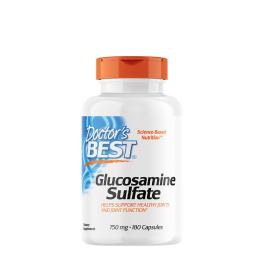Glucosamine is a substance found in cartilage and tendons. Our body uses it to produce proteoglycans (such as hyaluronic acid), the other main building block of joints. These proteoglycans bind water, providing moisture to the synovial fluid. Another ingredient that forms proteoglycans is chondroitin sulfate, which is often combined with glucosamine in nutritional supplements.
Several studies report the cartilage-strengthening effects of glucosamine and chondroitin sulfate together, but they do not exert as strong an effect individually as they do together.
Glucosamine sulfate and chondroitin sulfate are considered safe to use, but may cause mild side effects, including stomach upset or headaches. Their consumption is not recommended for people suffering from blood clotting disorders, asthma and prostate cancer, shellfish allergy and cataracts, or during pregnancy.
The studies worked with an average dose of 1500 mg of glucosamine sulfate and 800-2000 mg of chondroitin sulfate.
In many cases, in order to achieve general mobility fitness, people focus only on the muscles and neglect the joints and ligaments. However, in the long term, joint and ligament health is just as important as muscle health. In the long term, serious injuries can develop, such as fractures, strains, tears, chronic inflammation (tendonitis, bursitis), etc.
Why should we take glucosamine?
Dietary supplements containing glucosamine are widely used in the case of osteoarthritis. During the course of the disease, the cartilage cells between the joints are damaged and decomposed, and this is associated with severe pain, movement difficulties and can lead to bone injuries. This painful inflammation usually appears with age. Glucosamine can help reduce painful inflammation of cartilage and joints, help regenerate cartilage and prevent further cartilage damage.






































